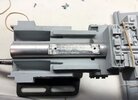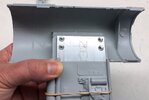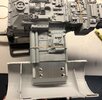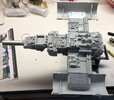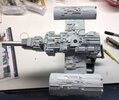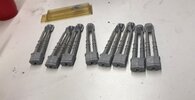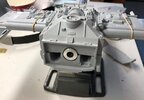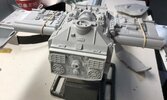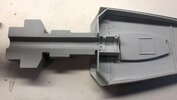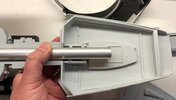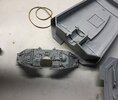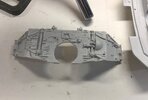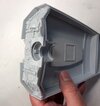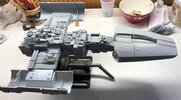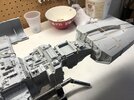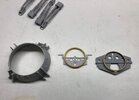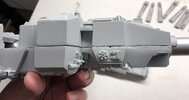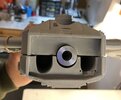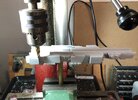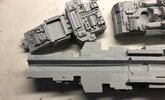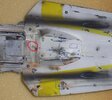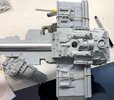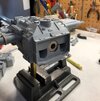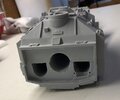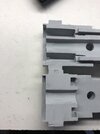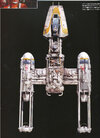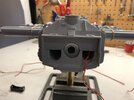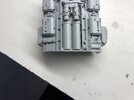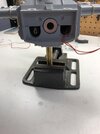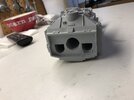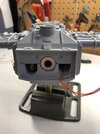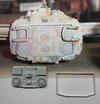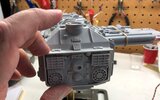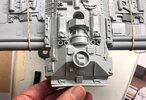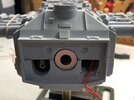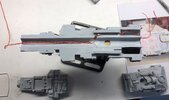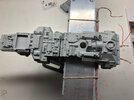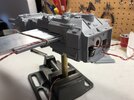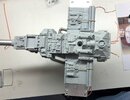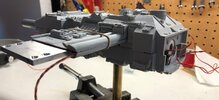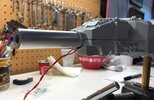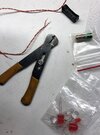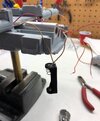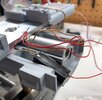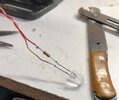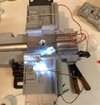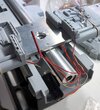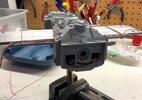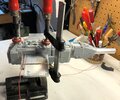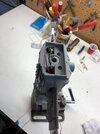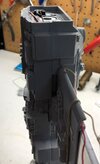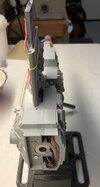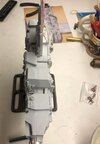It looks like there shouldn't be any more major changes to be made with the parts, so
I took the time this week to start cleaning all of the parts, starting with the larger ones (Just warm water and dish detergeant).
With those parts cleaned and dried, I reassembled the large parts and started fitting them with the aluminum, inner structure. If any more machining needs to be done at this point to the aluminum structure, it has to be done now because according to the instructions, the aluminum can simply be glued to the resin.
Considering the size and weight of this model, not to mention the fact that this isn't exactly a low priced project, I decided it might be wise to bolt the engines to the flat aluminum bar with four wood bolts, so I mark the ends of the aluminum piece in four spots for the bolts. This is the port side:
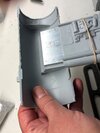
And starboard:
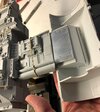
At this point I realize that there is no "holder" for the engine light for the port side, which basically sucks, but I'll figure out some thing later.
If I'm drilling holes, might as well drill two more so that the center bar is attached to the flat bar, so I mark two holes for it:
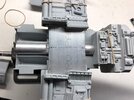
Four holes marked for the port side:
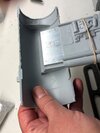
and for the starboard side:
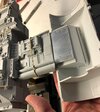
Holes marked and centered on the rod:
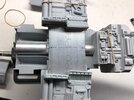
All holes drilled and then counter sunk:
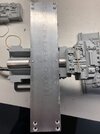
I took the time this week to start cleaning all of the parts, starting with the larger ones (Just warm water and dish detergeant).
With those parts cleaned and dried, I reassembled the large parts and started fitting them with the aluminum, inner structure. If any more machining needs to be done at this point to the aluminum structure, it has to be done now because according to the instructions, the aluminum can simply be glued to the resin.
Considering the size and weight of this model, not to mention the fact that this isn't exactly a low priced project, I decided it might be wise to bolt the engines to the flat aluminum bar with four wood bolts, so I mark the ends of the aluminum piece in four spots for the bolts. This is the port side:

And starboard:

At this point I realize that there is no "holder" for the engine light for the port side, which basically sucks, but I'll figure out some thing later.
If I'm drilling holes, might as well drill two more so that the center bar is attached to the flat bar, so I mark two holes for it:

Four holes marked for the port side:

and for the starboard side:

Holes marked and centered on the rod:

All holes drilled and then counter sunk:

Last edited:

